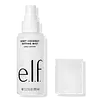What's inside
What's inside
 Key Ingredients
Key Ingredients

 Benefits
Benefits

 Concerns
Concerns

 Ingredients Side-by-side
Ingredients Side-by-side

Water
Skin ConditioningButylene Glycol
HumectantPhenoxyethanol
PreservativeVp/Va Copolymer
Caprylyl Glycol
EmollientAminomethyl Propanol
BufferingCalcium Sodium Borosilicate
Parfum
MaskingDisodium EDTA
Allantoin
Skin ConditioningAloe Barbadensis Leaf Extract
EmollientEctoin
Skin ConditioningHydroxyacetophenone
AntioxidantTin Oxide
AbrasiveCarnosine
Skin ConditioningPropylene Glycol
HumectantSodium Hyaluronate
HumectantCitrullus Lanatus Fruit Extract
Skin ConditioningBiosaccharide Gum-1
HumectantEthylhexylglycerin
Skin ConditioningTitanium Dioxide
Cosmetic ColorantCI 16035
Cosmetic ColorantWater, Butylene Glycol, Phenoxyethanol, Vp/Va Copolymer, Caprylyl Glycol, Aminomethyl Propanol, Calcium Sodium Borosilicate, Parfum, Disodium EDTA, Allantoin, Aloe Barbadensis Leaf Extract, Ectoin, Hydroxyacetophenone, Tin Oxide, Carnosine, Propylene Glycol, Sodium Hyaluronate, Citrullus Lanatus Fruit Extract, Biosaccharide Gum-1, Ethylhexylglycerin, Titanium Dioxide, CI 16035
Water
Skin ConditioningPolyurethane-35
Butylene Glycol
HumectantDipropylene Glycol
HumectantCocos Nucifera Oil
MaskingCocos Nucifera Water
MaskingTocopheryl Acetate
Antioxidant3-O-Ethyl Ascorbic Acid
Skin ConditioningCucumis Sativus Fruit Extract
EmollientCamellia Sinensis Leaf Extract
AntimicrobialPEG-40 Hydrogenated Castor Oil
EmulsifyingXanthan Gum
EmulsifyingPPG-26-Buteth-26
Skin ConditioningDisodium EDTA
Parfum
MaskingPhenoxyethanol
PreservativeEthylhexylglycerin
Skin ConditioningCaprylyl Glycol
EmollientMethylpropanediol
SolventPhenylpropanol
MaskingWater, Polyurethane-35, Butylene Glycol, Dipropylene Glycol, Cocos Nucifera Oil, Cocos Nucifera Water, Tocopheryl Acetate, 3-O-Ethyl Ascorbic Acid, Cucumis Sativus Fruit Extract, Camellia Sinensis Leaf Extract, PEG-40 Hydrogenated Castor Oil, Xanthan Gum, PPG-26-Buteth-26, Disodium EDTA, Parfum, Phenoxyethanol, Ethylhexylglycerin, Caprylyl Glycol, Methylpropanediol, Phenylpropanol
Ingredients Explained
These ingredients are found in both products.
Ingredients higher up in an ingredient list are typically present in a larger amount.
Butylene Glycol (or BG) is used within cosmetic products for a few different reasons:
Overall, Butylene Glycol is a safe and well-rounded ingredient that works well with other ingredients.
Though this ingredient works well with most skin types, some people with sensitive skin may experience a reaction such as allergic rashes, closed comedones, or itchiness.
Learn more about Butylene GlycolCaprylyl Glycol is a humectant and emollient, meaning it attracts and preserves moisture.
It is a common ingredient in many products, especially those designed to hydrate skin. The primary benefits are retaining moisture, skin softening, and promoting a healthy skin barrier.
Though Caprylyl Glycol is an alcohol derived from fatty acids, it is not the kind that can dry out skin.
This ingredient is also used as a preservative to extend the life of products. It has slight antimicrobial properties.
Learn more about Caprylyl GlycolDisodium EDTA plays a role in making products more stable by aiding other preservatives.
It is a chelating agent, meaning it neutralizes metal ions that may be found in a product.
Disodium EDTA is a salt of edetic acid and is found to be safe in cosmetic ingredients.
Learn more about Disodium EDTAEthylhexylglycerin (we can't pronounce this either) is commonly used as a preservative and skin softener. It is derived from glyceryl.
You might see Ethylhexylglycerin often paired with other preservatives such as phenoxyethanol. Ethylhexylglycerin has been found to increase the effectiveness of these other preservatives.
Parfum is a catch-all term for an ingredient or more that is used to give a scent to products.
Also called "fragrance", this ingredient can be a blend of hundreds of chemicals or plant oils. This means every product with "fragrance" or "parfum" in the ingredients list is a different mixture.
For instance, Habanolide is a proprietary trade name for a specific aroma chemical. When used as a fragrance ingredient in cosmetics, most aroma chemicals fall under the broad labeling category of “FRAGRANCE” or “PARFUM” according to EU and US regulations.
The term 'parfum' or 'fragrance' is not regulated in many countries. In many cases, it is up to the brand to define this term.
For instance, many brands choose to label themselves as "fragrance-free" because they are not using synthetic fragrances. However, their products may still contain ingredients such as essential oils that are considered a fragrance by INCI standards.
One example is Calendula flower extract. Calendula is an essential oil that still imparts a scent or 'fragrance'.
Depending on the blend, the ingredients in the mixture can cause allergies and sensitivities on the skin. Some ingredients that are known EU allergens include linalool and citronellol.
Parfum can also be used to mask or cover an unpleasant scent.
The bottom line is: not all fragrances/parfum/ingredients are created equally. If you are worried about fragrances, we recommend taking a closer look at an ingredient. And of course, we always recommend speaking with a professional.
Learn more about ParfumPhenoxyethanol is a preservative that has germicide, antimicrobial, and aromatic properties. Studies show that phenoxyethanol can prevent microbial growth. By itself, it has a scent that is similar to that of a rose.
It's often used in formulations along with Caprylyl Glycol to preserve the shelf life of products.
Water. It's the most common cosmetic ingredient of all. You'll usually see it at the top of ingredient lists, meaning that it makes up the largest part of the product.
So why is it so popular? Water most often acts as a solvent - this means that it helps dissolve other ingredients into the formulation.
You'll also recognize water as that liquid we all need to stay alive. If you see this, drink a glass of water. Stay hydrated!
Learn more about Water